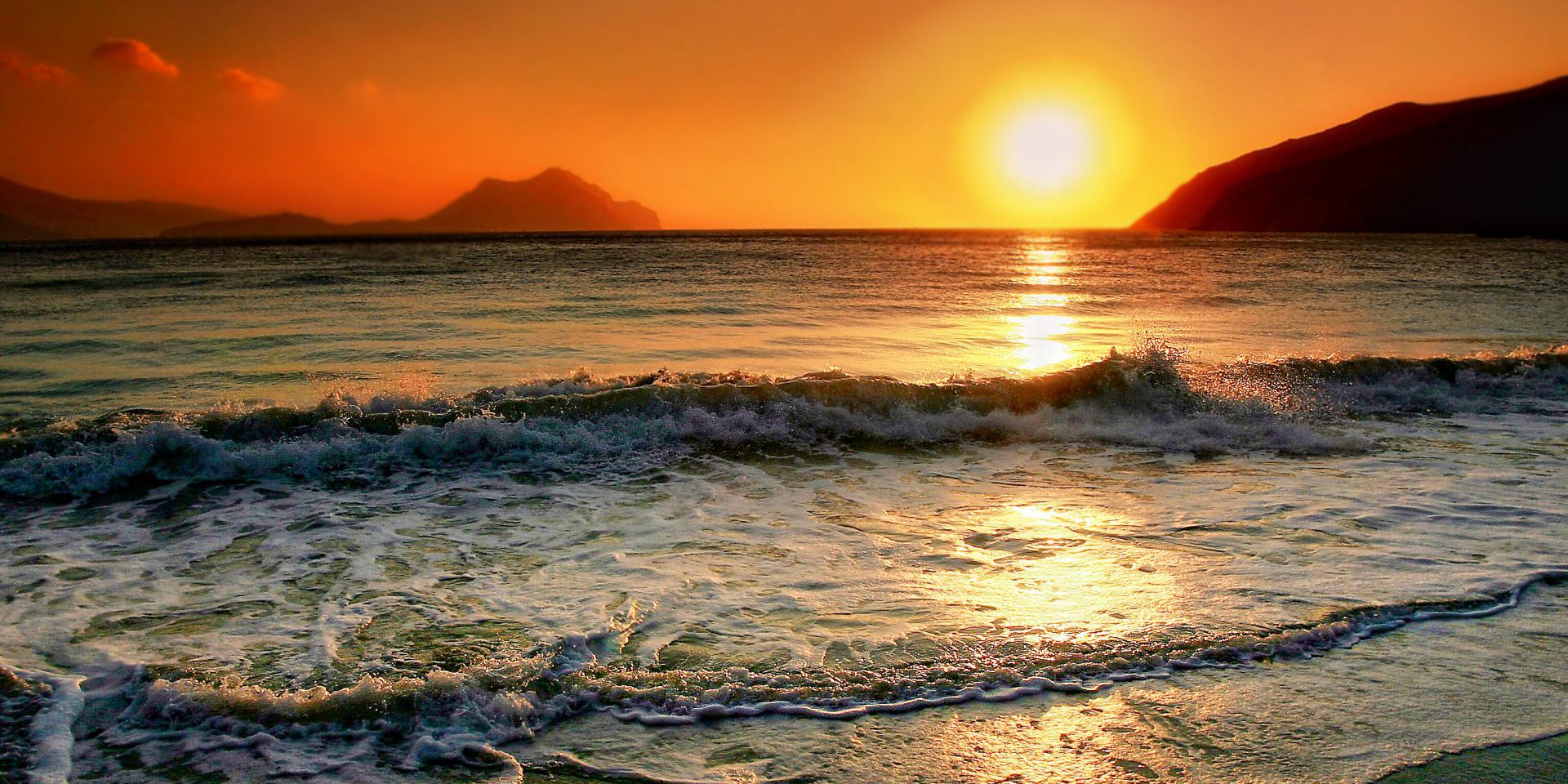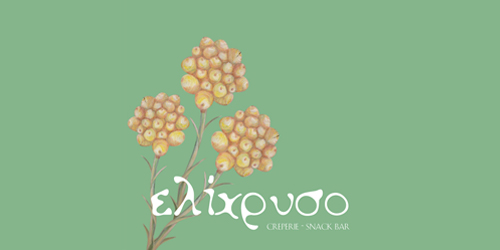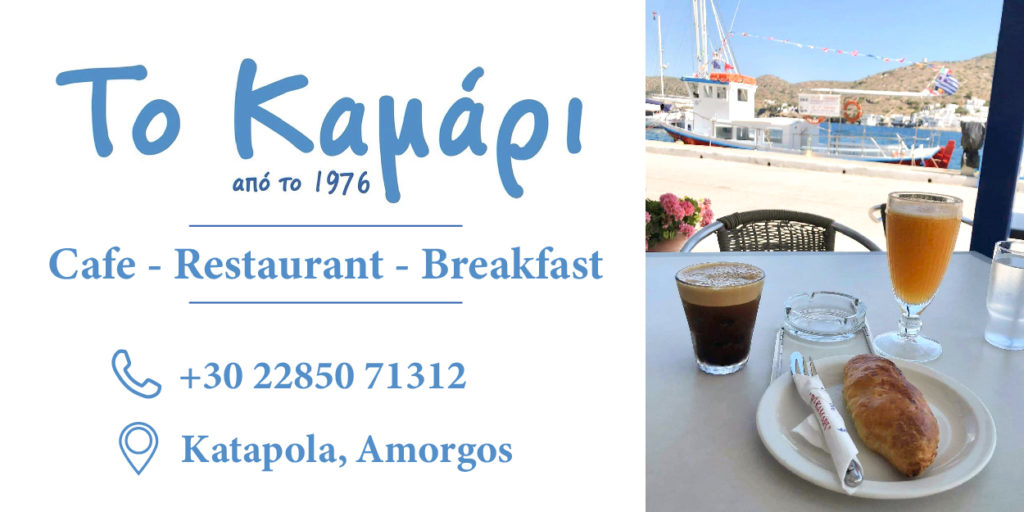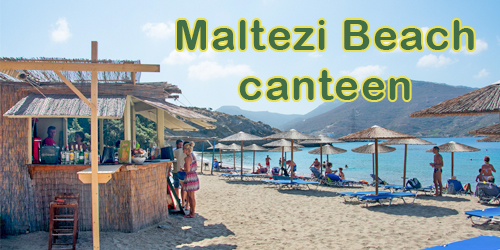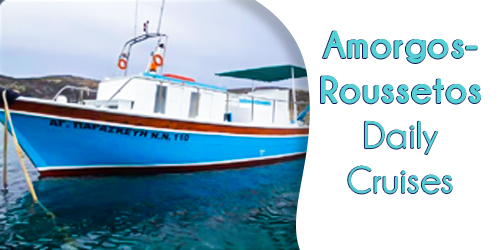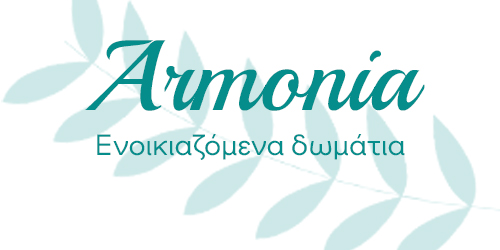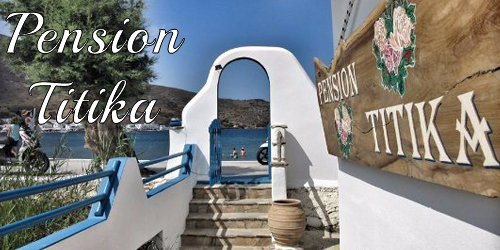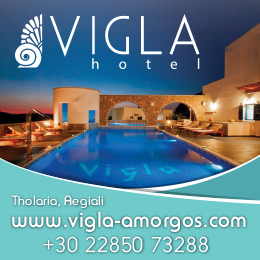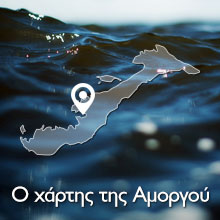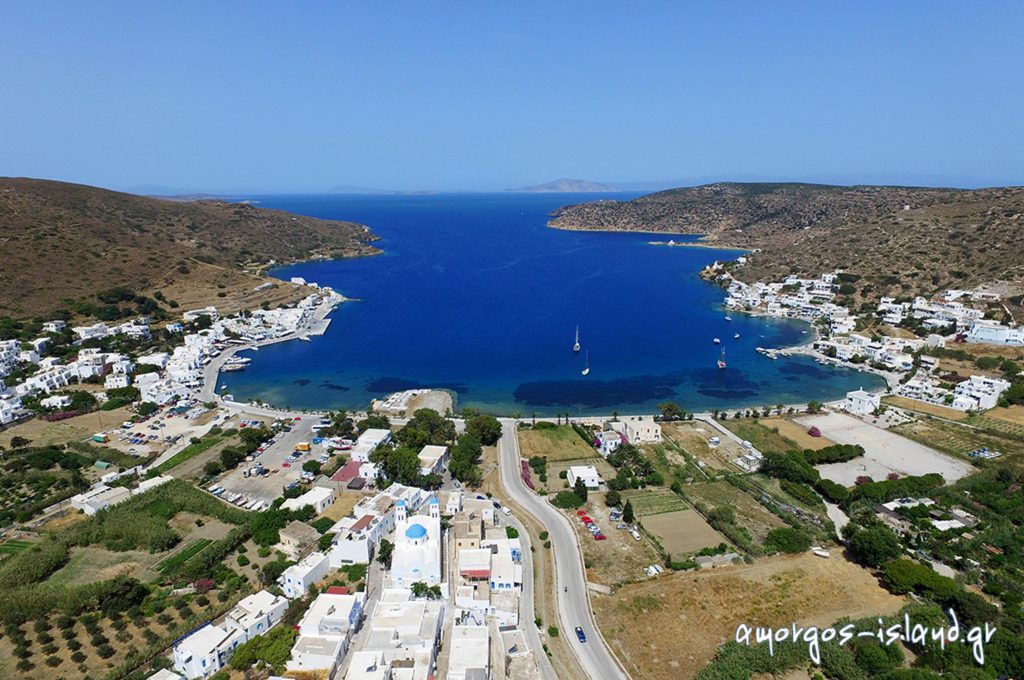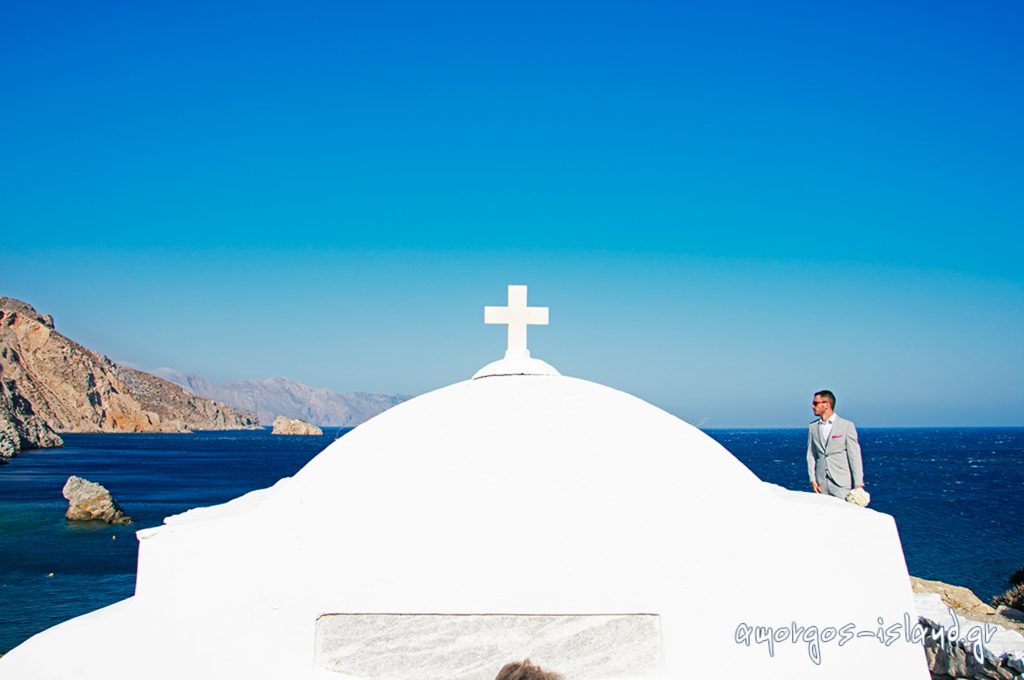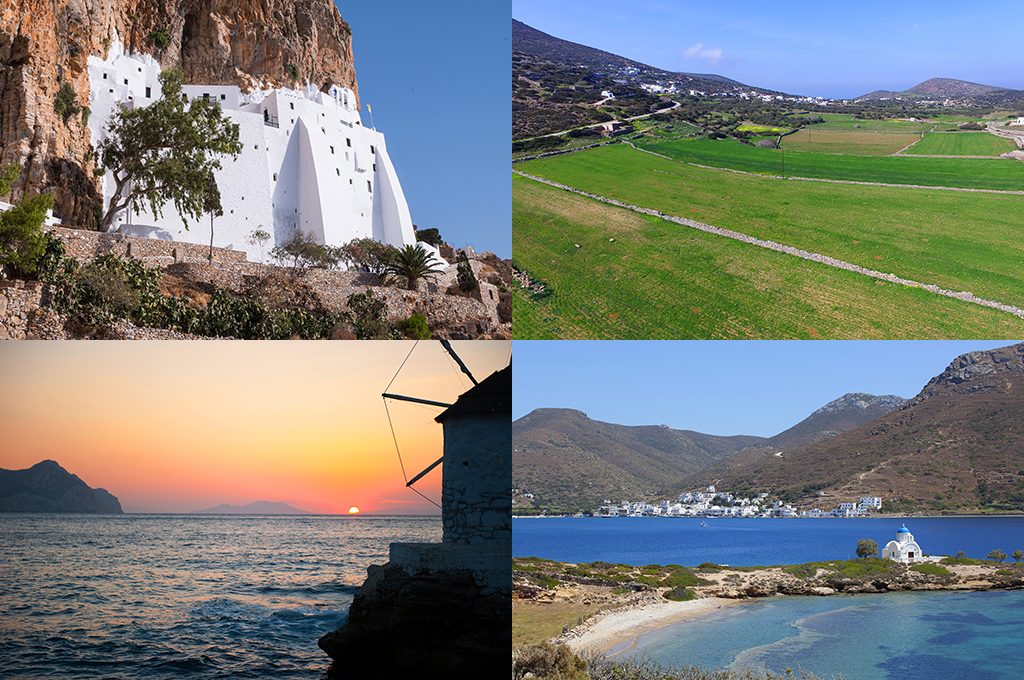Characteristics of Amorgos
Amorgos is situated between the islands of Naxos and Astypalaia and along the imaginary line that joins Piraeus with the Dodecanese Islands. Regarding its geographical characteristics, its shape is quite elongated with a length of about 32 km. The narrowest passage has a width of 3 km, with the widest being around 12km, while the total length of its coastline amounts to 112 km. It has an area of 121 sq km. It is the seventh largest island of the Cyclades, and the 25th island of Greece.
It is located in the centre of the Aegean Sea and its shores are sandy and extremely beautiful. The cliffs that are formed fall into the sea, offering a unique spectacle. The purity of its beaches and the deep blue sea are enchanting. Yacht owners must feel particularly fortunate as they have the opportunity to visit pristine beaches that are not easily accessible by land.
The waters of the Aegean Sea surrounding the island of Amorgos are very deep. On the northwestern coast of the island, the sea depth is 317 metres and comes to 95 metres around Cape Prasino (Green). On the southern end of the island the depth reaches 724 metres and as you go further east the depth diminishes to a depth of 256 metres, and around the Gulf of Aegiali the depth of the sea is 130 metres. Characteristic of the deep sea and the fierce waters surrounding the island is the creation of the famous “antimamalou”, as it is called in the language of the islanders. It is a phenomenon where the wave “crashes” onto the land and furiously turns back, where it meets those of an opposing direction. Hence when waves of opposing directions meet and “crash” what we have is an “antimamalo”. This effect is just one more unique image that nature so generously offers the visitors of the island. The resident population of Amorgos, according to the census of 2001 is 1,859 residents. The capital of the island is Amorgos which colloquially speaking is called Hora. Hora is located in the middle of the island and it’s just 5 km from the port of Katapola, with which it is connected by regular bus service.
Amorgos has two ports. On the west you can find the main port of Katapola, which is 136 nautical miles from Piraeus and 61 nm from the port of Ermoupoli (Syros), the capital of the Cyclades. On the North, one encounters the port of Aegiali, located 137 nautical miles from Piraeus and 60 nautical miles from Ermoupoli. Both ports are connected by regular ferry routes (more frequent during the summer months) to both the port of Piraeus and that of Rafina.
Particularly striking is the mountainous relief of the island. Amorgos is hilly and steep. The highest mountains are the rocky and very rough Krikelos or Kroukelos reaching 821 metres high in the northeastern part of the island, Prophitis Elias is 698 metres high in the centre and Aspro Vouno (White Mountain) is 630 metres high in the south.
The Kroukelos was the only mountain covered by a dense forest of beeches, oaks and lush wild plant life, from where the necessary lumber was obtained for shipyards. But in 1835 a fierce fire broke out on the mountain that lasted for 20 days, completely destroying the forest.
The mountain of Profiti Elia, is less steep than that of Kroukelos, and gradually, as it progresses towards the sea, it ends abruptly. On its steep sides, the temple of Panagia Hozoviotissa has been built. From the top of this picturesque mountain and when the horizon is clear, under favorable conditions you can see not only the entire of Amorgos but also many of the islands of the Aegean Sea in that area such as Naxos, Ikaria, Astypalaia, Ios and the distant Crete. The 23 islands and islets that surround it are always visible. The last of the mountains, Aspro Vouno is as steep and rocky as the other two. On the southeastern side of it forms the Cape Gonia. All of the mountains of the island are rocky, steep and treeless. Furthermore, due to the excessive force with which the rain water runs down from the mountains (because of the steepness of the slopes), large and impetuous streams are formed, yet another aspect of wild natural beauty of the island.
Although the island is mountainous, it is not deprived of small, yet very fertile, valleys. The largest valley of the island is Kolofanas, which is located on the southwestern tip of the island and is connected with another two smaller ones that of Kato Kampo and Kalotaritissa. On Amorgos there are two more valleys, one that stretches around the port of Katapola and is located at the centre of the island and another that is located on the northeastern side of Katapola, around the bay of Aegiali. Because of this topography, there are many coves and natural bays that form on the island. There are also natural springs, of which the greatest is that of St. George Valsamitis. In this spring, under the Turkish rule, it was said that the priests would carry out hydromancy (a method of divination by means of water) which initiated in ancient history. The limited stocks of water on the island due to low precipitation are the reason for the use of small reservoirs (cistern) by the residents for collecting rainwater. Products that are produced on the plains of the island are, the renowned for its quality and purity, Amorgian wine as well as olive oil, figs and cereals. All of them are fine and delicious. Fava (yellow split peas) are also a well known produce of the island. Other products of the island are cheese, milk and fish caught by Amorgian fishermen.
As poor as the Amorgian vegetation is in density and size, it is as rich in its variety of rare herbs with, mainly, healing properties.
Handmade Amorgian cotton and embroidery, made by the women of the island with a special love of beauty and skill, are very well known over the whole of Greece.
The main occupation of the Amorgians is fishing, shipping and farming. In the recent years however, a growing number of people have become involved in the tourist sector, as the island is going through a growing tourism period.
The islets of Gramvousa and Anitkeria are Amorgian pastures as are Nikouria and Anydros (or Amorgopoula).
Amorgos, the island that lies beneath the majestic and serene Aegean sky, has a pleasant Mediterranean climate. The winter is mild and is accompanied by strong winds. The geological history of Amorgos is very peculiar and differs from that of the other Cyclades. The oldest rocks of the island are mudstone; the long period of their formation began 230 million years ago, while limestone, the other type of rock encountered is younger (220 million years back). These two rock types cover the greater area of the island.
More specifically, we can say that the spread of the rocks along the island is such that it divides it into three distinct sections. The first starts from the town (Hora) and ends at the northeastern tip of the island, the second, the central section, includes the Hora, the island’s capital and reaches until the place called Kastri, nowadays, and the third includes the southwestern edge of Amorgos. Of the three sections, the first is slightly larger than the other two and the main part consists of limestone, the central part of mudstone shale and some limestone and the third mainly of limestone with blends of mudstone. The rocks form a steep slope and follow a direction from the northeast to the southwest.
In the old days, Amorgos was a part of mainland Greece. The current appearance of Amorgos was finalized 700,000 years ago, when pieces of land sank beneath the sea after strong earthquakes. Whatever remained of the land formed the island of Amorgos, a trend observed among the rest of the Greek islands. However due to the particular topography and inaccessibility of the area, many parts of the island have remained isolated for many years. Their development, in recent years, as its leaders decided to help the island, is rapid and robust, without violently interfering or destroying the beauty of the natural and untouched landscape of Amorgos!
Today Amorgos, unique for its beauty and proud of its history, stands assertively in the middle sea. It bathes its shores in a deep blue of the sea, it gives life to its crops enjoying the life-giving Aegean sun and breathes in the blue sky which surrounds it! Today, Amorgos invites us to experience its beauty and fill up with life!
